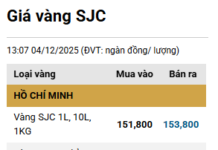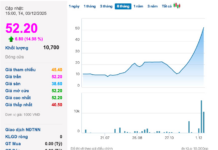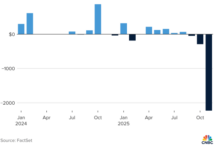On January 8, at the introduction conference of the International Exhibition of Production and Processing Technology for Vegetables, Flowers, and Fruits (HortEx Vietnam 2025), which is expected to take place from March 12 to 14, 2025, in Ho Chi Minh City, Mr. Dang Phuc Nguyen, Secretary-General of the Vietnam Vegetable and Fruit Association (VINAFRUIT), affirmed that Vietnam is emerging as a significant production and export hub for vegetables and fruits in the region.
In 2024, Vietnam’s vegetable and fruit export turnover set a record of US$7.2 billion, a remarkable leap of US$1.6 billion compared to 2023. This impressive jump marks an important milestone in achieving the near-future goal of exporting US$10 billion worth of produce.

Durian exports in 2024 dominated, bringing in US$3.2 billion, accounting for 45% of total vegetable and fruit export turnover.
Among the exported products, durian took the lead, earning US$3.2 billion, equivalent to 45% of the total vegetable and fruit export turnover. Fresh bananas also made significant progress, generating revenue of US$380 million, a 30% increase, outperforming strong competitors like the Philippines and Ecuador in the Chinese market.
According to forecasts, in 2025, Vietnam’s vegetable and fruit exports may reach US$8 billion and are expected to reach US$10 billion by 2030, matching the current export turnover of the seafood industry.
Impressive Growth in the Flower Sector
Not only vegetables and fruits but the flower industry in Vietnam has also witnessed remarkable growth due to favorable climatic conditions and diverse varieties. Vietnam is now a leading supplier of high-quality fresh flowers to many countries. In the period of 2021-2026, the fresh flower market is expected to grow by US$283.21 million, with a Compound Annual Growth Rate (CAGR) of 11.5%.
Mr. Nguyen Dinh Tung, Vice President of VINAFRUIT, shared that the success of vegetable and fruit exports is not solely attributed to market expansion. Efforts such as exporting durian to China in late 2022, bringing grapefruit to the US and New Zealand in 2023, and exporting coconuts to China in 2024 have significantly boosted the export turnover.
Additionally, the Vietnamese vegetable and fruit industry has successfully adapted to stringent technical barriers from international markets. Meeting the requirements for growing area codes and packaging factory codes has paved the way for Vietnamese produce to enter demanding markets, moving away from small-scale production.
Today, large gardens with strong regional linkages have become a solid foundation, not only providing a large supply of raw materials but also creating added value from regional specialties, catering to the export market.
Unlocking the Potential: THILOGI’s Endeavor to Revolutionize Official Durian Exports Through Chu Lai Port
The Chu Lai Port is emerging as a vital gateway for trade in Central and Highland regions of Vietnam. It plays a pivotal role in facilitating the export needs of the entire region, especially for agricultural produce, as evident by the ever-increasing trade value.







































